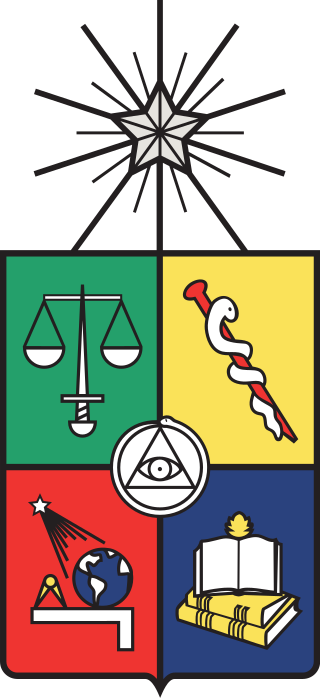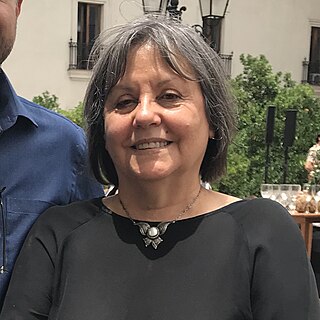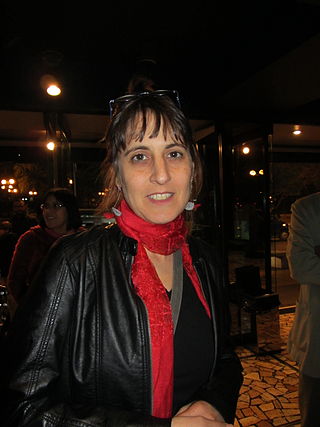This article has multiple issues. Please help improve it or discuss these issues on the talk page . (Learn how and when to remove these template messages)
|
Ariel Florencia Richards is a Chilean writer and scholar of visual arts.
This article has multiple issues. Please help improve it or discuss these issues on the talk page . (Learn how and when to remove these template messages)
|
Ariel Florencia Richards is a Chilean writer and scholar of visual arts.
Richards is a recipient of the Bicentennial Fellowship, which supported her completion of a MFA in Creative Writing at New York University. She first published her poetry in pamphlets and zines which were presented at NY Art Book Fair and Santiago Museum of Contemporary Art. Her calligraphy is included in the Brooklyn Museum Libraries and Archives permanent collections. [1]
Richards teaches writing and architecture at Universidad de las Américas and is working toward a PhD at Pontificia Universidad de Chile. [1]
Richards is a transgender woman and transitioned at age 37. Her third book, Inacabada, is the first she published after transition. [2]

Santiago, also known as Santiago de Chile, is the capital and largest city of Chile and one of the largest cities in the Americas. It is located in the country's central valley and is the center of the Santiago Metropolitan Region, which has a population of seven million, representing 40% of Chile's total population. Most of the city is situated between 500–650 m (1,640–2,133 ft) above sea level.

Gioconda Belli is a Nicaraguan-born novelist and poet known for her contributions to Nicaraguan literature.

Vicente García-Huidobro Fernández was a Chilean poet born to an aristocratic family. He promoted the avant-garde literary movement in Chile and was the creator and greatest exponent of the literary movement called Creacionismo ("Creationism").

The University of Chile is a public research university in Santiago, Chile. It was founded on November 19, 1842, and inaugurated on September 17, 1843. It is the oldest in the country. It was established as the continuation of the former colonial Royal University of San Felipe (1738), and has a rich history in academic, scientific and social outreach. The university seeks to solve national and regional issues and to contribute to the development of Chile. It is recognized as one of the best universities in Latin America for its leadership and innovation in science, technology, social sciences, and arts through the functions of creation, extension, teaching, and research. It is considered the most important and prestigious university in the country.

Diamela Eltit is a Chilean writer and university professor. She is a recipient of the National Prize for Literature.
Nelly Richard is a Chilean cultural theorist and editor of the Revista de crítica cultural. Among her books are The Insubordination of Signs and Cultural Residues.

Raúl Armando Zurita Canessa is a Chilean poet. He has received the Queen Sofia Prize for Ibero-American Poetry in 2020, the National Literature Prize in 2000, and the Pablo Neruda Ibero-American Poetry Award in 2016.

Mary Caroline Richards was an American poet, potter, and writer best known for her book Centering: in Pottery, Poetry and the Person. Educated at Reed College, in Portland, Oregon, and at the University of California at Berkeley, she taught English at the Central Washington College of Education and the University of Chicago, but in 1945 became a faculty member of the experimental Black Mountain College in North Carolina where she continued to teach until the end of the summer session in 1951.

Liliana Porter is an Argentine contemporary artist working in a wide variety of media, including photography, printmaking, painting, drawing, installation, video, theater, and public art.

Marta Traba Taín was an art critic and writer known for her contributions to Latin American art and literature.
Sofía Bassi was a Mexican painter and writer noted for her surrealist work as well as her personal life, which included five years in prison for murder. She maintained an active career despite incarceration, painting her first mural in prison in Acapulco, with the assistance of Alberto Gironella, José Luis Cuevas, Rafael Coronel and Francisco Corzas. This mural can now be found at the municipal building of the city.

Cecilia Vicuña is a Chilean poet and artist based in New York and Santiago, Chile.

Carla Rippey is a visual artist and the ex-director of The National School of Painting, Sculpture and Engraving "La Esmeralda." Although she was born in the US, Rippey is a considered a Mexican feminist artist.
Marta Victoria Salgado Henríquez is a Chilean activist who focuses on promoting cultural preservation and civil rights protections for the African diaspora. She has founded several non-governmental organizations to promote women's and minority rights and served as a government advisor in these areas. Trained as a teacher and public administrator, she has written books and articles on the legacy of Africans in Chile.

Alejandra Costamagna Crivelli is a Chilean writer and journalist.
Guadalupe Santa Cruz, also known as Lupe Santa Cruz, was a Chilean writer, philosopher, visual artist and translator. She is considered one of the most energetic and varied protagonists of a generation of writers that emerged after the period of the 1973 Coup d'État in Chile. Author of numerous books, including Plasma, with which she received two important prizes in Chile: the Premio Novela Inédita Consejo Nacional del Libro y la Lectura and the Premio atenea. Also, in 2004, Plasma received the prize of the Book Council as a novel in the unpublished category. In addition, at the international level, she received the John Simon Guggenheim Foundation fellowship in 1998.
Jorge Tacla is a Chilean-born visual artist. He studied at the Escuela de Bellas Artes, Universidad de Chile in Santiago and moved to New York City in 1981.

Suzi Ferrer (born Susan Nudelman, also known as Sasha Ferrer, was a visual artist based in San Juan, Puerto Rico from the mid-1960s to 1975. She is known for her transgressive, irreverent, avant-garde, art brut and feminist work.
Florencia Amundson Téves is a Spanish field hockey player.
Lucía Ximena Cristi Moreno was a Chilean post-impressionist and figurative expressionist painter. Alongside the artists Olga Morel and Aída Poblete, she is recognized for her work to convey "the worlds and perspectives of feminine expression."